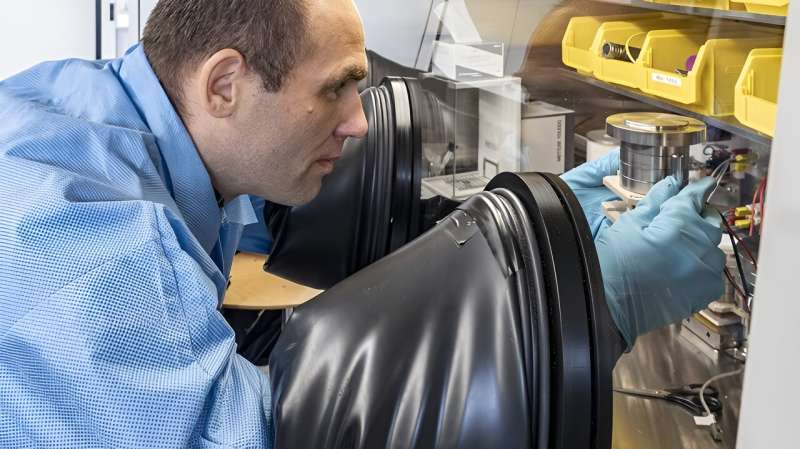The Swiss researchers have crafted light, energy-dense solutions for electric mobility and pioneering cost-effective storage alternatives for renewable energy.

In electromobility, the goal is to have batteries that are dense in energy but light and small, capable of rapid charging. Conversely, for stationary storage of electricity from sources like wind and solar, the emphasis is less on size and more on the economy, with the prime objective being to minimize costs.
Researchers at the Swiss Federal Laboratories are investigating new materials for next-gen batteries, ranging from fast-charging options for vehicles to cost-effective solutions for stationary storage, each with bespoke materials and innovative manufacturing techniques.
No simple task
All batteries consist of a cathode, anode, and electrolyte, with lithium-ion ones typically using a graphite anode and lithium metal oxide cathode. Solid electrolytes in solid-state batteries help prevent dendrite growth. Still, they must handle rapid charging’s high current density, which can lead to increased dendrite risks and intensified problems from lithium deposition at the electrode interface.
One material, two layers
The team have enhanced a solid electrolyte known as lithium lanthanum zirconium oxide, or LLZO. This material’s superior ionic conductivity and chemical stability make it excellent for battery use. Storing lithium within the pores maximizes the contact area between the lithium and the electrolyte, keeping current density minimal. The compact layer serves as a barrier to prevent the growth of dendrites that could short-circuit the battery. Additionally, the team has prioritized cost-effectiveness by devising a straightforward, affordable, and scalable method for manufacturing these bilayer membranes.
Inexpensive iron instead of costly cobalt
In exploring stationary energy storage alternatives, the researchers adopted a unique approach, emphasizing cost as the pivotal factor. The high price of stationary lithium-ion batteries largely stems from the expensive materials required for their cathodes, including lithium, cobalt, and nickel. The team’s quest for more affordable cathode materials led them to iron, an abundant element, albeit with a catch: iron compounds like fluorides have inherently low electrical and lithium ion conductivity. However, the team have innovated a cost-effective method to imbue iron(III) hydroxyfluoride with a particular pyrochlore crystalline structure that creates channels within the material, effectively conducting lithium ions.
References:
Huanyu Zhang et al, Ultrafast-sintered self-standing LLZO membranes for high energy density lithium-garnet solid-state batteries, Cell Reports Physical Science (2023). DOI: 10.1016/j.xcrp.2023.101473
Julian Felix Baumgärtner et al, Pyrochlore‐Type Iron Hydroxy Fluorides as Low‐Cost Lithium‐Ion Cathode Materials for Stationary Energy Storage, Advanced Materials (2023). DOI: 10.1002/adma.202304158






